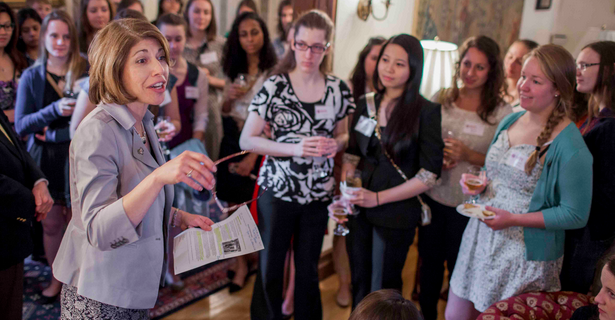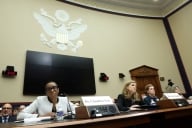You have /5 articles left.
Sign up for a free account or log in.

WPI
In an era when women dominate undergraduate enrollments nationally, engineering and technologically oriented institutions are the exception. Male students are still in the majority, sometimes by a substantial margin.
The class of new students enrolling at Worcester Polytechnic Institute, however, shows that it is possible to make real gains. Of entering freshmen, 43 percent are women. Last year the total was 34 percent and it had been edging up, by about a percentage point a year, in the years prior to that.
Laurie Leshin, president of WPI, said in an interview that she didn't just want to creep upward, but to make a real move. Leshin instituted one new policy in this admissions cycle that had a major impact -- combined with a policy started 10 years ago. Here's how WPI changed its enrollment makeup.
Leshin characterized the approach as "words and action" -- encouraging women to apply, but also matching that with concrete policy.
The key change this year is that Leshin decided to reallocate $1 million that WPI had been using for appeals of non-need-based aid awards. That's only about 4.4 percent of the aid budget for freshmen over all, but shifting the funds away from these appeals allowed WPI to be more generous to top female candidates, and it appears to have worked. (Many experts on aid criticize the use of such appeals funds anyway, saying that they are more likely to benefit families who know how to negotiate than those with need.)
Ultimately, she said, WPI should be 50 percent female. "We shouldn't settle for anything less" than 50 percent, she said. This year's goal was 40 percent, and Leshin said the additional aid made the difference this year in making real progress.
Leshin said that male students want to see gender equity at WPI, and she has received no pushback for the shift. If a few students who in years past would have managed to get more non-need-based aid on appeal decided to enroll elsewhere, Leshin said she's OK with that.
The yield for admitted female applicants this year was 30 percent -- up from 24 percent, where it had been for several years.
Sticking With Test Optional
If the shift in aid funds was new this year, and helped on yield, there is also a 10-year-old policy that continues to help the university attract more female applicants (and underrepresented minority applicants).
A decade ago, WPI dropped a requirement that applicants submit SAT or ACT scores. Many liberal arts colleges had already done so, and many more have done so since. But WPI was unusual in that the test-optional movement has made relatively little ground at science and technology-oriented universities.
WPI has seen no issues with retention or graduation rates as a result of the shift, but it has seen a steady diversification of its applicant pool -- and this year's shift in aid might not have had the same impact without that diversification in who was applying.
During the last 10 years, applications to WPI have increased by 81 percent. Applications from women are up 99 percent during that time, and applications from underrepresented minority students are up 146 percent. The figure for underrepresented minority women is 123 percent.
During that time period, 30 percent of female applicants have opted not to submit test scores, as have 22 percent of underrepresented minority applicants. During the previous decade, 25 percent of applications were from women and 12 percent from underrepresented minority students, suggesting that the policy had a strong impact on those groups.








